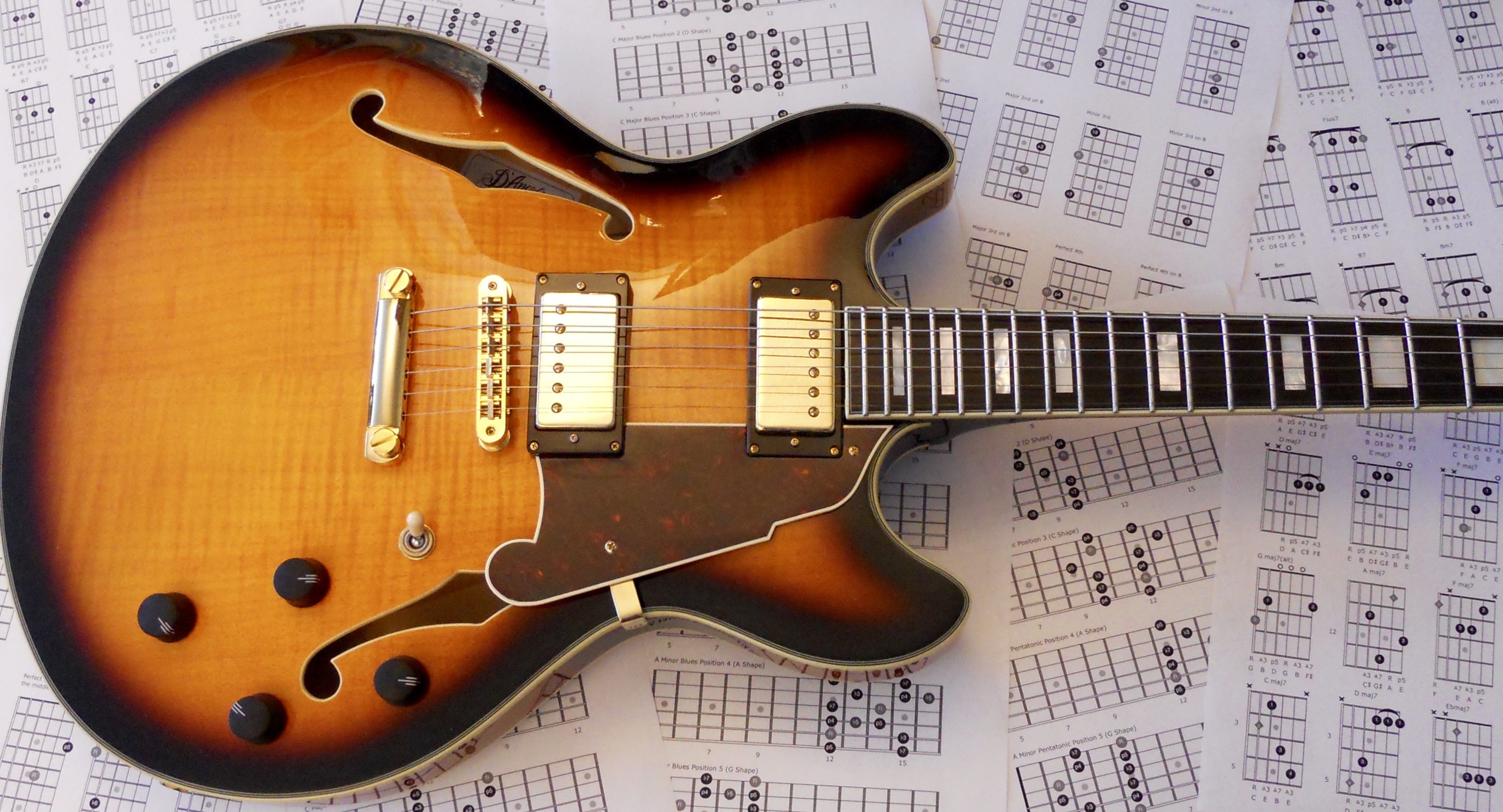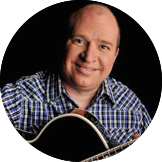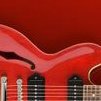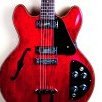-
Posts
316 -
Joined
-
Last visited
-
Days Won
40
Content Type
Profiles
Forums
Gallery
Events
Articles
Blogs
Downloads
Community Map
Everything posted by V7#5b9
-
I don’t recall anybody ever posting a comparison of their two or more guitars of the same type. So I thought it wouldn’t be a bad idea. Besides, I’m enjoying my retirement and more spare time. As I had indicated in my Epiphone Broadway post I wanted D’Angelico Excel EXL-1 for a long time. It wasn’t easy to get my hands on it, but I finally did it. To digress for a moment, I already have an Excel EX-DC (semi-hollow) which I got back in 2014, shortly after the brand had re-entered the market. Back then I figured they needed to put out good products to succeed. I wasn’t wrong. Frankly, it rivals my Gibson ES-335 and although I called my Gibby the real deal I actually bought a not-so-cheap piece of nostalgia. Don’t get me wrong. I dig my Gibby and it’s a great guitar, but I’m more and more convinced that I got myself an image. There are guitars just as good if not better out there. Back to the main theme. It’s been over a decade since D’Angelico hit the market and I hoped they didn’t begin to slack. Again, I wasn’t wrong. I can’t speak for every single one, but my Excel EXL-1 is literally flawless in terms of craftsmanship with great setup and crazy low action. I love it. What struck me the most was the acoustic quality of the instrument. It sounds strikingly similar to D’Angelico Originals. Maybe it’s got something to do with D’Angelico Electrozinc round wound strings which apparently are the re-creation of the original invention by renowned luthier John D’Angelico and master string maker John D’Addario. Regardless, the arch-top is a keeper for sure. And so is the customized Broadway. I put a fret wrap behind the nut and rubber grommets behind the bridge to eliminate micro-overtones. The Broadway sounds cleaner this way. With Gibson ‘57 Classic humbucker in the neck position the Broadway sounds like the real L-5. Of course, the Henriksen amp handles the arch-tops or any other guitar superbly, giving you that classic jazz tone. Picture included. So how do they compare? Let’s consider some differences: Excel EXL-1 vs Customized Broadway Strings: D’Angelico Electrozinc Jazz 12-52 D’Addario Chromes 12-52 flat wound Fingerboard: Ebony Pau Ferro Body Depth: 3” 3 1/8” Bridge: Ebony Pau Ferro Tailpiece: D’Angelico Stairstep Frequensator Neck Pickup: Saymour Duncan 59 humbucker Gibson 57 Classic humbucker Made in: Korea China Obviously, they sound similar, but not the same. Each one has its own character or voice. Both have a broad dynamic range and sound good acoustically. The D’Angelico with a single humbucker and controls mounted on the pick-guard has more going for it in that respect. Plugged in they both can sound very similar depending on the EQ. On the scale from one to ten I’ll give D’Angelico 10 out of 10 and Epiphone 9 out of 10.
- 1 reply
-
- 2
-

-
"In his new book, The Holistic Guitarist, Acoustic Guitar contributing editor Sean McGowan offers a comprehensive approach to staying healthy, practicing creatively, and improving as a musician."
-
@Gary Nelson @Gene C Blu Ten is definitely a great amp. It handles arch-top guitars extremely well and generates that classic jazz tone. Luckily, the volume can be set relatively low so they won’t necessarily hear me.
-
There is only one picture with two items in it. I uploaded it to the Gallery and then inserted in the post. I can see the picture in both places. The first item is an arch-top guitar D’Angelico Excel EXL-1 in dark iced tea burst. The second item is a jazz amp Henriksen Blu Ten. I’m not sure why you don’t see any pictures.
-
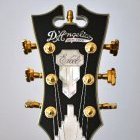
NGD: For the Fingerstyle Retreat
V7#5b9 replied to jasn's topic in Guitar Gear, Amps, Effects, Pedals
@jasn This is definitely a polyphonic instrument. -
I’ve recently become a senior citizen and I thought the age of retirement called for a special celebration. So I’ve allowed myself to acquire a couple of higher end items. They are my final choices and from now on, I will probably begin to sell off the gear I no longer, or seldom use. No lengthy post this time, just a picture.
-
-
Epiphone decided to refresh some models for 2023 to celebrate their 150th anniversary. So I thought it would be a good time to get the Casino. Well, it arrived with a few minor detail oriented shortcomings. The output jack was loose. Tone knob for the neck pickup came off easily. I fixed both issues. The pickguard “E” started to peel off. Initially, I was gonna reglue it, but I decided to remove the whole thing. The guitar looks much better without it, anyway. There’s one more thing I will have to work on. After checking the setup, I measured the nut height at the first fret, and I’ll have to cut the slots to improve tuning stability and intonation. I’ve done it before on my Broadway. Overall, I’m happy with the Casino. The guitar is well made. It looks and sounds great. Although the playability is fine, it will improve when I file down the nut slots. Now, I didn’t get it just because the Beatles had used the Casinos. I got it because of the following factors: Hollow body Light weight Comfort (16th fret neck joint makes the 24.75” scale length feel shorter) Less prone to feedback than my Broadway Loud enough acoustically to practice unplugged Great jazz sound when plugged in Historically, the Epiphone Casino is essentially an equivalent to Gibson ES-330 with some small cosmetic differences. This one was made in China, but I’ll give it a score of 9 out of 10 due to the above-mentioned issues.
-
@Ice9 For some reason the log has never appealed to me, but it’s not a bad choice. @Wim VD1 Sheraton II Pro is in my arsenal already. It’s in the Gallery. Close call, by the way. @Eracer_Team-DougH Interesting choice, but I don’t see Baritone Ukulele in their line-up. @Strings It’s an acoustic/electric guitar. Well, I hope this way of NGD posting was a bit of fun, but perhaps it’s time to carry on and open the bag. Coming up shortly.
-
Care to guess what's in the gig bag?
-
@Fretless Glad you found it helpful.
-
You’re welcome, Fretless. Barney is one of my faves, very melodic player and easy to listen to.
-
Yeah, I got Rick’s bundle back in 2021 when he had his Black Friday offer. I was mainly interested in his Ear Training course, but all his stuff is pretty good. Like with most resources, the trick is to cherry-pick in order to work on one’s weaknesses.
-
Here’s a couple of videos that complement Steve’s “Jazz Chords Fretboard Workout.” The first one is a great introduction to 7th chords on 5 string groups. Jimmy Bruno has a very practical approach and this video, on C7 chord alone, is enough to work out the rest. If you don’t want to do the hard work of figuring it all out, the second video offers the complete treatment of Drop Voicings. There’s a nominal fee for the accompanying PDFs, but it’s well worth it. If I were Richie, I would charge way more for this amount of work.
-
Produced at CKY-TV WINNIPEG, CANADA, 1985/86. Rumark Video uploaded the entire Barney Kessel series: “Jazz Guitar Improvisation, Progressive Concepts, and Chord-Melody Style” to their YouTube channel. Here’s your chance to see them again, or perhaps for the first time, and learn from the great musician and educator, Barney Kessel. Although the PDFs of the original booklets are not available yet, there’s a lot one can learn from the videos alone. So to spread the word, here are the links to the playlists: Jazz Guitar Improvisation Progressive Concepts Chord-Melody Style
-
This is a cool YouTube channel. @NeilES335 It appears you know of this one. Why haven't you spread the word yet?
-
@Plantsman13 I hope you enjoyed the performance at the club. I’m sure you know that Jazz guitar is not really gear specific, but it does set the standard. Ed Bickert, Ted Greene, John Scofield are good examples of jazz players using Teles. Although purists may claim that Gibson L-5 is the only true jazz box, what you’re most comfortable with, matters the most. Great jazz tone can be dialed in using solid-, semi-, or hollow-body guitar. Nonetheless, I see that the most frequently used guitar types for Jazz are: ES-335, ES-175, and L-5. It’s nice to have the options.
-
I’ve been trying to complete my guitar arsenal for the past 9 months. Not an easy task, especially when you’re looking for an affordable archtop jazz guitar. Since I’m not into the used market, I initially chose D’Angelico Excel EXL-1. But, after nine months of delays and no ETA, I began to consider alternatives that might be still in stock. I already have an entry level jazz box, so this time I needed something better. I settled on an Epiphone Broadway. But, I didn’t want just a stock item. I decided to have it customized to sound more like a Gibson L-5. Guitar tech who inspected the electronics said that the pots were actually CTS and the toggle switch was Gibson spec. Those parts didn’t have to be replaced. Since the stock item comes with 10 – 46 string gauge, that had to be changed. I ordered a new TUSQ nut slotted for 12 – 52 string gauge, flat wound strings, Gibson ‘57 Classic humbuckers, and low action setup. Hardshell case had to be added as well. All this made the guitar still affordable, but not cheap. There was one thing I wasn’t sure about - the Frequensator tailpiece. And as luck would have it, the guitar tech actually owns a 40s Epiphone archtop and has nothing but good things to say about the Frequensator, and the way that it balances out the bass and treble strings. Here’s what the person I was dealing with had to say about the archtop after the modifications: “The guitar is all done and sounds great! I just gave it a quick test through a Deluxe Reverb and the new pickups and the set up with flat wounds has made a huge difference!” and “Let me know how you get along with the guitar once it arrives, I was quite impressed once it was finished so I'm hoping you have a similar experience.” I got this beauty out of province. Even though it was strictly an Internet deal, I was confident about the end result. The stock guitar might’ve been transferred to a preferred local store for my personal inspection before modifications. However, I was impressed enough with detailed communication and the level of service, so I passed on that. So what’s my experience with it? I’ve only had it for a few days, but my initial experience with the instrument is very positive. It is easy to play and sounds really great through my BluesCube Artist. It does cause feedback if it’s too close to the amp, so it’s something to be aware of. I think the modifications were a good choice. There are no flaws in the finish, and I find the whole guitar a fine piece of workmanship. Despite its L-5 dimensions and tone wood combination, I find the guitar quite comfortable and not very heavy. If you’re into jazz guitar and not a beginner player, this guitar offers a big bang for your buck. Add a few modifications and you have a premium jazz box. By the way, it’s not a paid endorsement, just an honest review. In case someone finds it useful, I’m including the full specs (modifications listed in bold) for reference: 2019 EPIPHONE BROADWAY – Hand-Crafted in China Headstock: Large "Clipped Ear" style with Mother-of-Pearl "Vine" Inlay Tuners: Grover Rotomatic, 18:1 ratio Hardware Plating: Gold Nut: TUSQ XL ¼” Epiphone slotted Nut Width: 1 11/16” Neck Material: Hard Maple Neck Shape: Slim-taper, C Profile Neck Joint: Glued-in, Set Neck Fingerboard Material: Pau Ferro (offers feel and tone between rosewood and ebony) Fingerboard Inlay: Mother-of-pearl/Abalone Block and Triangle Fingerboard Radius: 12" Frets: 20 medium-jumbo Scale Length: 25 ½" Body Type: Hollow-body Body Shape: Broadway with Venetian Cutaway Body Material: Laminated Maple Top Material: Select Spruce Binding: Multi-ply on Headstock, Body & Fingerboard, Single-ply on F holes Body Size: 17” Lower Bout, 3 1/8” Deep Body Finish: Gloss Color: Vintage Natural Pick-guard: Multi-bound Imitation "Tortoise" with metal "E" Bridge: Adjustable Floating, Pau Ferro Tailpiece: Frequensator™ Split Trapeze Neck Pickup: Gibson ‘57 Classic Humbucker Bridge Pickup: Gibson ‘57 Classic Humbucker Controls: 2-Volume, 2-Tone Pickup Selector: 3-way Toggle Switch Strings: D’Addario Chromes 12 – 52 Flat Wound Optional: Jumbo Acoustic Hardshell Case I may install a Tune-o-matic bridge for archtop, or even change the tailpiece in the future. But for now, I’ll leave that vintage look intact.
-
-
-
Plugging in an electric guitar is only the beginning. How about a guide to guitar tone shaping? Here’s one worth reading: The Secret to Great Guitar Tone – Volume and Tone Knobs In case you miss it, there is another article, by the same author, that deals with shaping your guitar tone using amp settings: The Secret to Great Guitar Tone Using Amp Settings
-
I don’t think Rick Beato needs an introduction, but if you’ve never heard of Rick, look him up in Wikipedia. Anyway, I’ve been considering his Ear Training course for some time now. I just didn’t want to spend the money. However, his Black Friday offer is the deal I couldn’t reject. So I got it all. I must say that I’m favorably impressed. If anybody’s interested in Rick’s limited time offer, here’s the link: The Beato Ultimate Bundle
-
- 2
-


